Breaking News: Former Lugari MP Cyrus Jirongo dies in a road crash
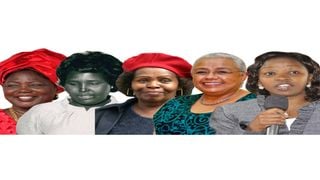
Kenya's former first ladies (from left) Mama Ngina Kenyatta, Lena Moi, Lucy Kibaki, Margaret Kenyatta and current First Lady Rachel Ruto.
| File | Nation Media GroupKenya@60
Premium
The Presidents' wives and their behind-the-scenes influence
Traditionally, the position of First Lady was an extension of the cultural expectations of a wife such as welcoming guests and hosting social events at the official residence of the President.
In modern times, this has changed drastically with the establishment of the Office of the First Lady, complete with a budget and staff.
The First Lady is viewed as not only the first supporter of the president but also a sort of influence behind the scenes. Since independence, Kenya has had five First Ladies who stand out for different reasons from being vocal and feared to remaining unseen for decades.
Ngina Kenyatta, the Mother of the Nation
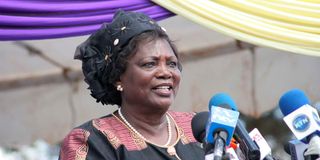
Former First Lady Mama Ngina Kenyatta.
Born Ngina Muhoho in 1933, Kenya’s founding first lady, who turns 90 on June 24, has remained a significant person of influence since independence.
During her time as first lady, she was known for her philanthropic activities, which include setting up one of the oldest children’s homes in Kenya, the Mama Ngina Kenyatta Children’s Home in Nairobi.
Despite leading a reclusive life since her husband passed on 44 years ago, Mama Ngina has emerged every once in a while to defend her family and businesses, as well as the preservation of her late husband’s legacy.
Lena Moi, the ‘absent’ First Lady
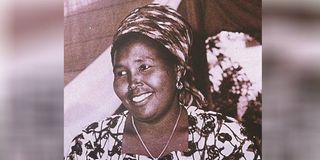
Mama Lena Moi.
It’s likely you could be hearing of this First Lady today for the very first time. She faded gradually from the public eye back in the 70s and stayed away from the limelight until her death in 2004.
Before her husband, the late Mzee Daniel Moi became president, Lena Moi had been actively involved in politics as the Second Lady. She supported her husband (then a vice president) by conducting harambees and championing women’s groups in the Rift Valley.
On January 1, 1968, President Jomo Kenyatta bestowed on Lena the Order of the Golden Heart medal for her service to the community.
The following year, Mzee Moi bought the Kabimoi Farm and built a house for Lena. Shortly after this, she started fading from the public even as her husband got more engaged in politics.
In a biography of Mzee Moi called The Making of An African Statesman by Andrew Morton, there isn’t much information about Moi’s marriage life with Lena despite them having eight children together.
In 1974, their marriage ended in a divorce and Lena vacated the vice-president’s official residence and settled at Kabimoi Farm.
She fully immersed herself in rural life, attending the community church, joining women’s groups, and avoiding the media spotlight. Apart from her eldest son Jonathan, her other children opted to stay with their father in Nairobi.
Surprisingly, Lena Moi did not attend any of her children’s weddings and even when her own father died in 1997, she stayed in the background during the burial.
When Lena died in July 2004, she was buried in Kabarak where Moi lived even though she had never stayed in the homestead.
In death, Lena was reunited with her husband. The second First Lady of the country had remained unseen in her official capacity for 24 years.
Lucy Kibaki, the ‘tough, protective’ First Lady
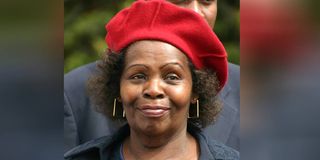
Former First Lady Lucy Kibaki.
For many people, one of the most enduring memories of Kenya’s third first lady was the lengths she would go to protect the image of her family.
She is greatly remembered as a powerful, unapologetic and unwavering matriarch who would do anything to protect her children and her husband.
In 2009, President Mwai Kibaki called a press conference where he clarified that he had only one wife, the First Lady, Lucy. She stood beside him clearly agitated and made it clear that she was not happy about the stories journalists were writing about her family and marriage at the time.
Lucy was a staunch defender of the interests of the poor and the disadvantaged in society, especially women and children. She bravely led the fight against the HIV/AIDS scourge in the country at a time when there was still so much stigma against those living with the condition.
She was recognised for her efforts and appointed President of the coalition of African First Ladies against HIV/AIDS. She was also Patron of the Kenya Girls Guide Association.
Mama Lucy, as she was fondly called by many, was no-nonsense with those who worked in Kibaki’s government. Francis Kimemia, former Head of Public Service recalls, for example, that “Of course if she called you, you prayed to your God that you had not done something wrong. But if you had, she would tell you to your face. She would correct you and she would follow up to see if things had been corrected.”
After President Kibaki left office, she maintained a low profile until her death in 2016 while receiving treatment in London.
Margaret Kenyatta, the soft-spoken First Lady
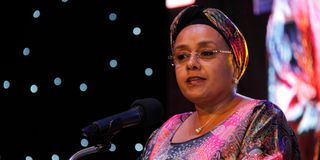
Former First Lady Margaret Kenyatta.
Margaret was born in 1964 to a Kenyan father and German mother. In 1991, she got married to former President Uhuru Kenyatta.
As first lady, Margaret succeeded in being mysterious while remaining visible to the public.
From the onset, she maintained that she would steer clear of politics to focus on social issues especially in the health sector.
Her biggest undertaking was the Beyond Zero Campaign which was a project aimed at improving maternal and child health in Kenya. The initiative saw the donation of fully equipped mobile clinics rolled out across all counties in Kenya.
Between 2013 and 2017, the campaign’s main focus areas were eliminating all preventable maternal and child deaths, mobilising funds to support maternal, newborn and child health initiatives as well as eliminating the spread of HIV particularly during childbirth.
In her second and final term as First Lady, Margaret widened the campaign to ensure pregnant women were enrolled on the Linda Mama Program that would enable them to deliver in hospitals for free.
She also supported projects geared towards the treatment of obstetric fistula and cancer screening.
All her efforts in the healthcare sector were recognised when she was named UN Kenya Person of the Year in 2014 and the prestigious Eastern Africa Lifetime Achievement Award in 2018.
Margaret also made history for being the first First Lady to run a 42-kilometre marathon when she participated in the London Marathon to raise funds for the Beyond Zero Initiative.
She will always be remembered for her calm demeanour and how she seemed content to stay away from the limelight and support her husband, former president Uhuru Kenyatta.
Rachael Ruto, the ‘prayer warrior’ first lady
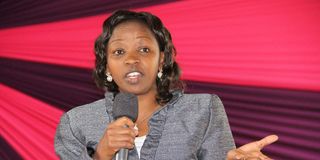
First Lady Rachel Ruto.
The current first lady is known to be an avid cyclist and an advocate for women’s empowerment.
Before she sprung into the limelight, she founded Joyful Women Organization (JoyWo), an initiative to financially empower rural women in 2009.
As first lady her focus has been on various projects including the Environment and Climate Action. She has encouraged Kenyans to take care of the environment by planting more trees.
As a lover of cycling, she has encouraged more Kenyans to embrace non-motorised means of transport as a way of reducing emissions.
Through JoyWo and other organisations, she has continued to champion financial inclusion through initiatives such as table banking.
She is also the founder and patron of Mama Doing Good, an organisation which she describes as consisting of three core pillars that catalyse socio-economic transformation in communities to achieve a quality holistic life through spirituality, collective agency, voice and influence.
She has also earned the title of prayer warrior for her efforts in using faith as a tool for promoting cohesion, peace and development.
During the 27th Ordinary General Assembly of the Organization of African First Ladies for Development (OAFLAD) in February, she emphasised the importance of incorporating church leaders in positively impacting communities through faith diplomacy.





